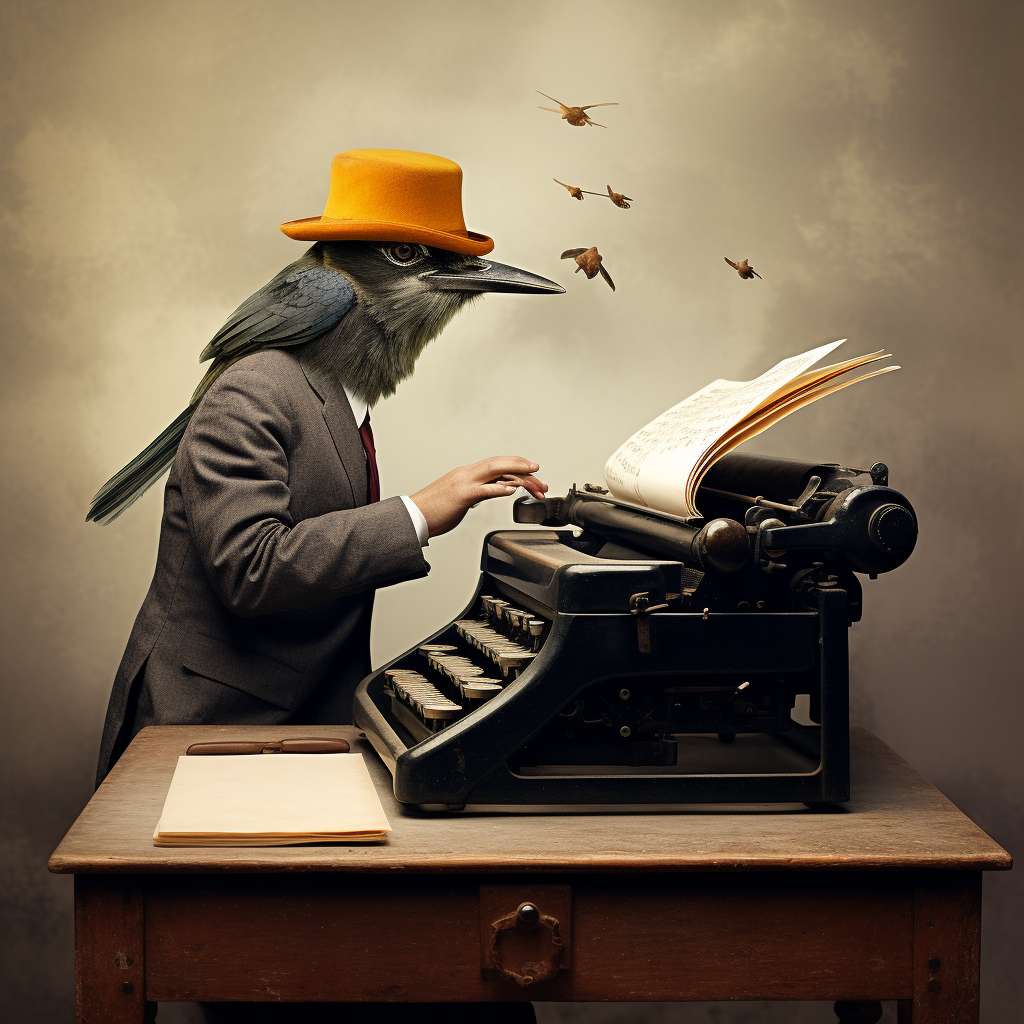
How to Write Good Poems? Poetry, the art of weaving words into tapestries of emotion and meaning, is a realm where the power of language truly shines. Yet, the path to creating exceptional poetry is often paved with questions: What makes a poem great? How can I evoke emotions with words? What techniques can I use to craft memorable verses?
In this poetic voyage, we will not only explore the intricacies of poetic expression but also uncover the secrets that transform words into vivid images, emotions into tangible experiences, and thoughts into unforgettable verses. Join us as we delve into the world of poetry and uncover the artistry behind crafting exceptional poems that captivate hearts and minds alike.
The Craft of Writing Good Poems: Building with Words

In the realm of poetry, words are the bricks and mortar with which we construct our literary masterpieces. Think of poetry as an architectural endeavor, and each word as a carefully chosen building block. Just as an architect must select the ideal materials to create a masterpiece, so must poets meticulously pick their words to construct poetic brilliance.
The Power of Words
Every word in a poem carries a unique beauty and strength. Just as a skilled photographer captures the essence of a moment with each click of the camera, poets aim to freeze moments in time with the click of their metaphors and similes.
But what makes a word powerful? It’s its ability to evoke emotions, paint vivid pictures, and convey complex ideas. In this section, we’ll delve into the world of word choice in poetry. We’ll explore how selecting the right words can elevate your poetry and make it resonate with readers.
Emotions: The Fuel of Poetry
Poetry is an emotional journey where the heart’s whispers and shouts find expression. Like an alchemist turning base metals into gold, poets transform raw feelings into golden stanzas that resonate with readers. Effective poetry doesn’t just tell; it shows. It immerses the reader in the poet’s emotional landscape, making them experience joy, sorrow, love, or anger firsthand.
We’ll dive deep into the world of emotions in poetry. You’ll discover how to infuse your verses with the raw power of feelings, creating an emotional connection with your audience. Poetry is a rollercoaster ride through the heart, and in this section, we’ll explore how you can be the conductor.
Structure and Form: The Backbone of Poetry
Just as the human body’s bones give it shape, form provides a poem with its structure. Whether it’s the rigid bones of a sonnet or the flexible framework of free verse, poetic structure is the skeleton that holds the poem together.
A well-structured poem acts as a guide, leading readers through the poet’s thoughts and emotions. It offers a rhythm, a pattern, a melody that resonates with the human soul. Structure isn’t a constraint; it’s a scaffold that helps the poem stand tall and shine.
Rhyme and Rhythm: The Musicality of Poetry

Welcome to the symphony of poetry, where words become musical notes, and verses dance to the beat of rhyme and rhythm. Poetry is a rich tapestry of sounds, and in this section, we’ll explore how rhyme and rhythm add a delightful musical quality to it.
The Harmony of Rhyme
Rhyme is like the harmonious chords of a well-played guitar. It’s the repetition of similar sounds at the end of lines, creating a pleasing and often memorable auditory experience for the reader. Just as a catchy tune can stay with you long after the music fades, a well-executed rhyme scheme can linger in your mind.
But rhyme is not just about making words sound similar; it’s about creating connections within the poem. We’ll delve into the art of rhyme, exploring various rhyme schemes and their impact on poetry. Rhyme can add depth, musicality, and even humor to your verses.
Rhythm: Poetry’s Heartbeat
Rhythm is the heartbeat of poetry, setting the pace and flow of words. It’s the drumbeat that guides readers through the poem’s emotional landscape. Much like a song’s rhythm can make your foot tap, the rhythm in poetry can evoke specific emotions and reactions.
Meter and syllable count contribute to the musicality of your verses. Rhythm can mimic the heartbeat of the human experience, creating a powerful connection between poet and reader.
Enjambment and Caesura: The Pause and Flow
In the symphony of poetry, enjambment and caesura act as the rests and pauses, the moments of silence between the musical notes. Enjambment occurs when a line of poetry flows into the next without a pause, like a river rushing over stones. Caesura, on the other hand, is a deliberate pause within a line, like a deep breath in a song.
These techniques are the tools that control the poem’s pacing and influence how readers interpret it. They add depth, drama, and dimension to the verses, much like pauses in a powerful speech or the rests in a soul-stirring melody. Enjambment and caesura can be used to create unique rhythms and enhance the overall impact of your poetry.
The Path to Becoming a Poet: Nourishing the Poetic Soul

Embarking on the journey to become a poet is akin to setting sail into the vast sea of creativity. Just as a sailor tends to their ship before embarking on a voyage, you must nurture your inner poet to allow your creative spirit to flourish. In this section, we’ll delve into the fundamental steps that guide you on the journey to becoming a poet, acting as your guiding star through the fertile landscape of poetic expression.
Reading Poetry: The Fertile Soil of Creativity
Think of reading as the fertile soil from which a poet’s creativity springs. Just as a plant draws nutrients from the earth to grow and flourish, poets draw inspiration, knowledge, and ideas from reading. It’s through the words of others that you enrich your poetic soil.
But reading widely is not just about consuming words; it’s about exploring different styles, voices, and themes. It’s about delving into the works of poets who have paved the way, immersing yourself in classic literature, and embracing contemporary voices. We’ll guide you on how to read like a poet, extract inspiration from diverse sources, and cultivate your unique perspective.
Writing: The Forge of the Poet’s Voice
Writing is the forge where raw creativity is shaped into poetic artistry. Just as a blacksmith hammers a piece of metal into a finely crafted blade, poets refine their thoughts and emotions through the act of writing. It’s where your unique voice, like a masterful blade, is honed and sharpened.
But writing poetry is more than just putting words on paper. It’s about capturing moments, emotions, and ideas in a way that resonates with readers. You must craft verses that speak from the heart and soul. Whether you’re a seasoned poet or just starting, you need to use these skills to express yourself effectively through poetry.
Poetic Feedback: The Power of Constructive Criticism

Think of feedback as the whetstone that sharpens a sword. Receiving constructive feedback and revising your work is how poets refine their craft. It’s the process of examining your poem’s every facet, from word choice to structure, and perfecting it until it gleams like a polished gem.
Not all feedback will resonate with your poetic style or the essence of your poem. Some may offer valuable insights into refining your work, while others might steer you away from your intended message or style. As you grow as a poet, you’ll develop the ability to sift through feedback, extracting the gems that elevate your poetry and respectfully setting aside the suggestions that don’t quite align with your unique voice.
This skill, much like a seasoned chef knowing which ingredients to include and which to omit, is crucial in preserving the authenticity of your poetic voice while benefiting from constructive criticism. It’s a delicate balance that every poet must strike on their journey toward mastery. Consider seeking feedback from:
- Fellow Poets: Other poets can provide valuable insights into your work, as they understand the craft and can offer constructive criticism.
- Writing Groups: Joining a local or online writing group can connect you with a community of writers who can offer feedback and support.
- Creative Writing Instructors: If you’re taking poetry classes, your instructors can provide expert guidance and feedback.
- Beta Readers: These are individuals who enjoy reading and can provide feedback from a reader’s perspective.
- Friends and Family: While they may not be poets, friends and family can offer a layperson’s perspective on your work’s accessibility and emotional impact.
- Online Writing Forums: Websites like Reddit’s r/poetry or other poetry-focused communities can be excellent places to share your work and receive feedback from a diverse audience.
- Literary Journals: Submitting your poetry to literary journals may result in publication and editorial feedback.
- Mentors: If you have a mentor in the poetry world, they can provide invaluable guidance and critique.
- Professors or Teachers: If you’re studying poetry academically, your professors or teachers can offer expertise and feedback.
- Poetry Workshops: Enrolling in workshops or attending poetry events can connect you with experienced poets and enthusiasts who can provide feedback.
Remember that diverse feedback from multiple sources can help you gain a well-rounded perspective on your work.
Poetry Revision Strategies and Insights

Revising your poems is akin to a sculptor refining a block of marble into a masterpiece. It’s the stage where you chisel away the unnecessary, smoothen the rough edges, and bring out the hidden beauty within your work. We’ll provide you with practical strategies and insights on how to approach the revision process effectively, ensuring that your rough drafts transform into polished poems that shine with brilliance.
Here’s a list of practical strategies and insights on how to approach the revision process effectively when working on your poetry:
- Take a Break: After writing a poem, step away from it for a while. This break allows you to return with fresh eyes and a more objective perspective.
- Read Aloud: Reading your poem aloud helps you catch awkward phrasing, pacing issues, and areas that might need improvement.
- Focus on One Element at a Time: Instead of trying to revise everything at once, concentrate on specific elements like imagery, word choice, or structure in each revision pass.
- Seek Feedback: Share your work with others and be open to their suggestions. Consider joining a writing group or seeking input from fellow poets.
- Trust Your Instincts: While feedback is valuable, trust your own artistic instincts. You know your poem’s intent better than anyone.
- Cut Unnecessary Words: Be ruthless about eliminating unnecessary words or phrases that don’t add to the poem’s meaning or impact.
- Experiment with Different Structures: Play around with the poem’s structure to see if a different arrangement of lines or stanzas enhances its impact.
- Consistency in Tone: Ensure that the tone and voice of your poem remain consistent throughout unless there’s a deliberate shift for effect.
- Polish Your Opening and Closing: The beginning and ending of a poem are crucial. Make sure they draw readers in and leave a lasting impression.
- Use Powerful Line Breaks: Experiment with line breaks to control pacing and emphasize key points or images within your poem.
- Balance Imagery and Emotion: Strive for a harmonious balance between vivid imagery and emotional resonance to create a compelling poem.
- Edit for Clarity: Ensure that your poem’s meaning is clear. Avoid overly cryptic or convoluted language that might confuse readers.
- Consider Sound: Pay attention to the musicality of your poem. Explore how the sounds of words and their arrangement contribute to the overall experience.
- Check for Consistency in Theme: Ensure that your poem’s theme or message remains consistent and coherent.
- Simplify When Necessary: Sometimes, simplicity can be more impactful. Don’t overcomplicate your poem if a straightforward approach works better.
- Multiple Revisions: Understand that revision is an ongoing process. Be prepared to revise your poem multiple times to refine it fully.
- Set It Aside Again: After a round of revisions, set your poem aside once more before the final review to ensure that you’re satisfied with the changes.
- Proofread for Errors: Carefully proofread your poem for spelling, grammar, and punctuation errors in the final stages of revision.
- Read Widely: Continue reading a variety of poetry to expand your understanding of different styles and techniques.
- Be Patient: Patience is key in the revision process. Crafting a poem takes time, so don’t rush the revisions.
Remember that revision is where your poem truly takes shape and becomes the best version of itself. Embrace the process and enjoy the journey of refining your work.
Conclusion: Crafting Poetry’s Tapestry

In the realm of poetry, where words metamorphose into vivid tapestries of emotion and meaning, the journey of crafting verses is an ever-evolving odyssey. The art of poetry is not a static destination but a dynamic expedition, where poets continuously explore the vast landscapes of language and human sentiment.
As we conclude our poetic voyage, we find ourselves enriched with the knowledge that poetry is an intricate dance of words, emotions, and craftsmanship. It’s the fusion of imagery, word choice, structure, and the symphony of rhyme and rhythm. Poetry is, in essence, the exquisite tapestry that we weave as we navigate the labyrinth of our own thoughts and feelings.
Remember that the poet’s journey is one of continuous growth. Just as a tree’s branches reach ever higher and its roots delve ever deeper, so too does the poet’s craft mature with each verse written, each metaphor conceived, and each emotion bared.
So, whether you are just setting foot on this poetic path or have journeyed through its terrain for years, know that you are part of a timeless tradition. The poet’s pen holds the power to move hearts, provoke thought, and capture the fleeting beauty of existence.
Keep writing, keep exploring, and keep crafting the tapestry of your unique poetic voice. In the words of Robert Frost, “Poetry is when an emotion has found its thought and the thought has found words.” May your emotions find thoughts, and those thoughts find the most beautiful and resonant words.
Let your verses echo through time, for poetry is the mirror in which humanity glimpses its soul.
Learn More About Earning Income from Your Poetry
- Publish Poetry Online and Get Paid
- Do you get paid for publishing poetry?
- How can I get my poetry noticed?
- How much should I sell my poetry for?
- How much does it cost to publish poetry?
- Can anybody be a poet?
- What are the 11 rules in writing a poem?
- What is the number one rule of poetry?
- How many lines must a poem have?
- What is a single line of poetry called?
- What is a poem with one line called?
- What is the middle of a poem called?
- Why don’t poets follow grammar rules?
- What is 3 line poetry called?
- What should a poem look like?
- How to write good poems?
FAQs: Navigating the World of Poetry
1. What makes a poem “good”?
A good poem effectively communicates emotions, thoughts, or ideas to the reader. It often does this through vivid imagery, careful word choice, and a well-crafted structure.
2. How can I improve my poetry writing skills?
Improving your poetry writing skills takes practice. Study different poetic techniques, read widely, and write regularly. Don’t be afraid to revise and experiment with your poetry. Like any craft, improvement comes with dedication.
3. What are some common mistakes to avoid in poetry?
Common poetry mistakes include clichés, forced rhyme, and excessive verbosity. It’s essential to strike a balance between creativity and clarity. Avoid using tired, overused phrases, and focus on fresh, original language.
4. Are there specific rules for writing good poetry?
While poetry has many conventions and techniques, there are no rigid rules for writing good poetry. Creativity, self-expression, and emotional resonance are at the core of poetic excellence. Poetry is a realm where you have the freedom to bend and break the rules, as long as it serves your artistic vision.
5. How do I choose the right form for my poem?
Choosing the right form depends on your subject matter, theme, and personal style. Experiment with different forms to find the one that best suits your poem’s message and emotional impact. Sometimes, the poem itself will guide you to the form it needs.